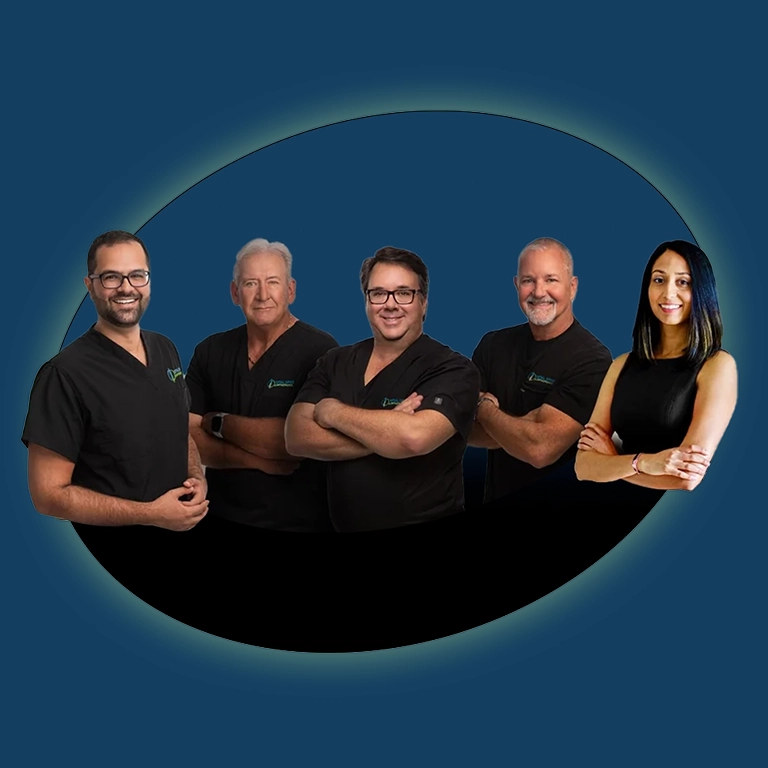Disc Regeneration: Non-Surgical Approaches to Restore Spinal Health
Our Team
We are a team of highly specialized spine surgeons dedicated to pioneering the future of spine care.
Share:
Table Of Contents
- What Is Disc Degeneration and Why Does It Happen?
- What Is Disc Regeneration?
- Non-Surgical Treatment Options for Disc Regeneration
- PRP Therapy
- Exosome Therapy
- Endoscopic Spine Surgery
- Which Treatment Is Right for You?
- What to Expect from the Regeneration Process
- Best Exercises for Degenerative Disc Disease
- Frequently Asked Questions FAQs
- Related Treatments at Total Spine Wellness
What Is Disc Degeneration and Why Does It Happen?
Your spine is made up of a stack of bones (vertebrae) cushioned by soft discs that act as shock absorbers. Over time, or due to injury, these discs can wear down — a condition known as disc degeneration.
Natural Aging Process
As we age, the spinal discs lose hydration and elasticity. This reduced flexibility makes them less effective at absorbing shocks, leading to pain, stiffness, and limited mobility.
Injury, Trauma, or Poor Posture
Sudden injuries like car accidents or sports impacts can damage the discs directly. Over time, poor posture or repetitive strain (e.g., from heavy lifting or long sitting periods) can accelerate disc wear and tear.
Loss of Hydration and Flexibility in Spinal Discs
A healthy disc is well-hydrated and flexible. With degeneration, discs flatten and lose their ability to cushion the spine, often causing nerve compression, inflammation, and radiating pain.
What Is Disc Regeneration?
Disc Regeneration refers to a collection of innovative, non-surgical treatments designed to reverse or slow down spinal disc degeneration by promoting tissue repair, hydration, and healthy function.
Definition and Goals of Disc Regeneration
The main goal of disc regeneration is to restore disc height, reduce inflammation, and relieve pressure on spinal nerves. These treatments do not simply mask symptoms — they aim to repair the disc at a cellular level, providing long-term relief.
How It Differs from Traditional Surgical Treatments
Unlike spinal fusion or discectomy surgeries, which may remove parts of the spine or limit motion, regenerative disc therapy preserves spinal structure. It promotes natural healing, involves minimal risk, and has little to no downtime. These treatments are ideal for patients looking for alternatives to spinal surgery.
Non-Surgical Treatment Options for Disc Regeneration
At Total Spine Wellness, we offer advanced therapies that support disc regeneration without the need for invasive procedures. Each option is tailored based on your specific diagnosis, symptoms, and overall health.
Stem Cell Therapy
One of the most promising methods in regenerative disc therapy, stem cell therapy uses the body’s own cells to regenerate damaged disc tissue. Stem cells can transform into different cell types, including those that make up cartilage and disc material.
- Stem cells are typically harvested from the patient’s bone marrow or fat tissue.
- They are then injected into the damaged disc under imaging guidance.
- Once delivered, they reduce inflammation and help rebuild disc structure.
🔗 Learn more about Stem Cell Therapy
PRP Therapy
PRP (Platelet-Rich Plasma) therapy uses concentrated platelets from your own blood to deliver healing factors directly to the damaged disc.
- Platelets contain growth factors that stimulate tissue repair.
- The PRP is carefully prepared and injected into the disc area.
- It helps reduce inflammation and pain, especially in early-to-moderate stages of disc degeneration.
🔗 Discover how PRP for spine health works at PRP Therapy
Exosome Therapy
Exosomes are microscopic vesicles released by stem cells that carry proteins, RNA, and growth factors — essentially, they’re cell messengers that tell tissues to regenerate.
- Exosome injections offer a non-cellular yet highly potent approach to disc regeneration.
- They enhance intercellular communication and encourage natural healing processes.
🔗 Learn more about our Exosome Therapy
Endoscopic Spine Surgery

While not technically a regenerative therapy, Endoscopic Spine Surgery is a minimally invasive procedure that can complement regenerative treatments in severe cases.
- It involves a tiny incision and a camera-guided tool to remove damaged disc material or relieve nerve pressure.
- Faster recovery and less tissue damage than traditional surgery.
🔗 When surgery is needed, explore Endoscopic Spine Surgery
Which Treatment Is Right for You?
Choosing the right disc regeneration treatment depends on several factors, including the severity of your disc degeneration, your medical history, and how your body responds to conservative therapies.
Factors Influencing Treatment Selection
- Stage of degeneration: Mild to moderate cases often respond well to PRP or exosome therapy, while advanced degeneration may benefit from stem cell therapy or a combination of treatments.
- Patient age and overall health: Younger patients may regenerate faster, while older individuals may need more intensive care plans.
- Lifestyle and activity level: Athletes and physically active individuals may prefer regenerative options that allow for faster recovery and mobility.
- Response to prior treatments: If physical therapy or medications haven’t worked, it may be time to consider non-surgical back pain treatment options like those offered at Total Spine Wellness.
When to Consider Regenerative Therapies vs. Surgical Options
Surgical intervention is not the only path to relief. You should consider regenerative disc therapy if:
- You’re looking for disc repair without surgery
- You want to avoid the risks and long recovery times of traditional operations
- You prefer natural healing approaches that support long-term disc health
However, when severe nerve compression or disc herniation is present and regenerative approaches haven’t yielded results, a minimally invasive surgical option may be necessary.
What to Expect from the Regeneration Process

Understanding what happens before, during, and after treatment can help you feel more confident and prepared. Here’s a breakdown of the typical disc regeneration experience at Total Spine Wellness.
Consultation
Every journey begins with a comprehensive evaluation. We use MRI imaging, physical assessments, and a full medical history to determine the source of your pain and the best treatment path.
Procedure Overview
- Most therapies are performed in-office with local anesthesia.
- The treatment area is sterilized and guided using live imaging for accuracy.
- Injections (stem cells, PRP, or exosomes) are delivered precisely into the affected disc.
- The procedure typically takes under an hour.
Recovery Timeline
- Day 1–3: Some soreness or stiffness may occur at the injection site.
- Week 1–4: Patients usually begin noticing reduced inflammation and improved mobility.
- Month 1–3: Regeneration accelerates, and many patients report substantial pain relief and increased activity levels.
- Physical therapy may be recommended to support structural balance.
Expected Results
Most patients experience:
- Decreased back and neck pain
- Improved range of motion
- Restored disc hydration and height
- Reduced dependency on medications
Best Exercises We Recommend for Degenerative Disc Disease
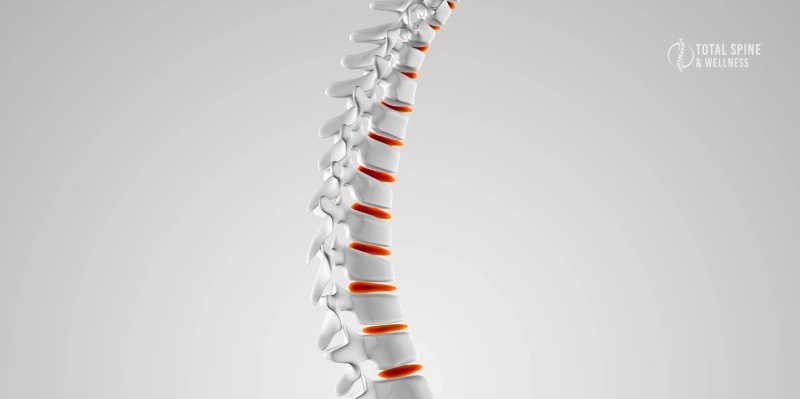
Living with degenerative disc disease can be challenging, but incorporating the right exercises into your routine can significantly improve your spinal health and overall well-being. At Total Spine Wellness, we emphasize the importance of gentle, supportive movements that promote healing and enhance mobility. Here are some of the best exercises to consider:
- Swimming and Water Therapy: These activities reduce spinal pressure while enhancing flexibility, making them ideal for those with degenerative disc issues. The buoyancy of water supports the body, allowing for a low-impact workout that minimizes strain on the spine.
- Walking: Regular walking helps maintain mobility and prevents stiffness, promoting overall spinal health. Aim for a brisk walk several times a week to keep your body active and engaged.
- Yoga and Stretching: Incorporating yoga and stretching routines can enhance spinal flexibility and alleviate pain associated with degenerative disc disease. These practices not only improve range of motion but also foster relaxation and stress relief.
- Core Strengthening Exercises: Strengthening the core provides better support for the spine, helping to stabilize and protect the discs from further degeneration. Focus on exercises that target the abdominal and back muscles to create a strong foundation.
By integrating these exercises into your daily routine, you can take proactive steps towards managing degenerative disc disease and enhancing your quality of life.
Always consult with your healthcare provider or a physical therapist before starting any new exercise program to ensure it aligns with your specific needs and condition.


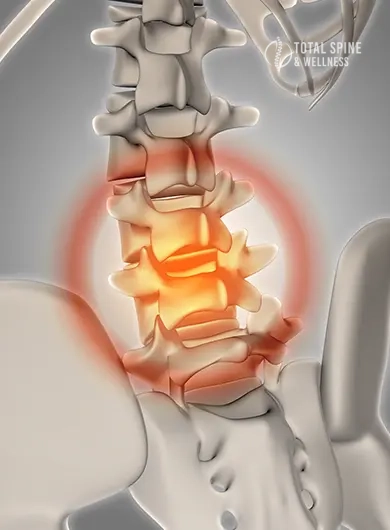
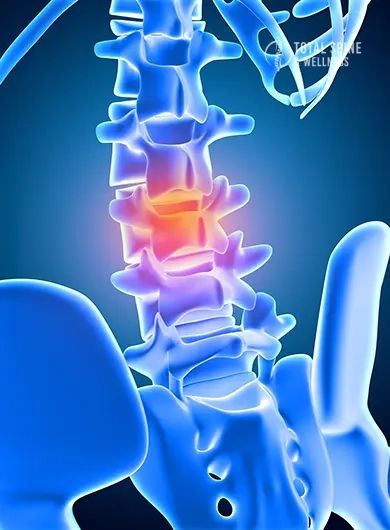
Frequently asked questions (faqs)
Is Disc Regeneration Painful?
Most patients report only mild discomfort during the injection. The regenerative process itself is non-invasive and does not involve cutting or removing tissue, making it far less painful than surgery.
Can Spinal Discs Regenerate Naturally?
Mild degeneration may improve with rest, hydration, and posture correction. However, for meaningful disc repair, advanced regenerative therapies are often required to stimulate real healing.
Are These Treatments FDA-Approved?
PRP and stem cell therapies fall under “practice of medicine” in many states, meaning they can be offered legally but may not yet have full FDA approval for every use case. We follow strict medical and ethical guidelines to ensure safety and effectiveness.
Can I Avoid Surgery Completely?
In many cases, yes. Our goal is to help patients heal without invasive procedures. Many individuals avoid surgery altogether by starting with non-surgical back pain treatment options like PRP, exosomes, or stem cell therapy.
Related Treatments at Total Spine Wellness
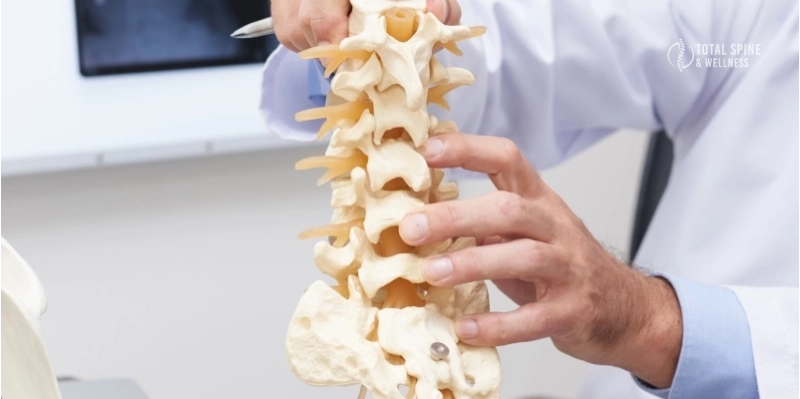
In addition to disc regeneration, Total Spine Wellness offers a full spectrum of services designed to treat both acute and chronic conditions of the spine and joints.
We combine regenerative therapies with advanced diagnostics and a patient-first approach to ensure each person receives personalized, effective care.
🔗 To explore our complete approach to spine and joint care, visit our Spine and Joint Pain Treatment Services page.
Ready to Take the First Step?
You don’t have to live with back pain — and you don’t have to face surgery to fix it. At Total Spine Wellness, we offer safe, effective, and research-backed disc regeneration therapies tailored to your needs.
Call us or click below to schedule your personal consultation and find out if regenerative disc therapy is right for you.
